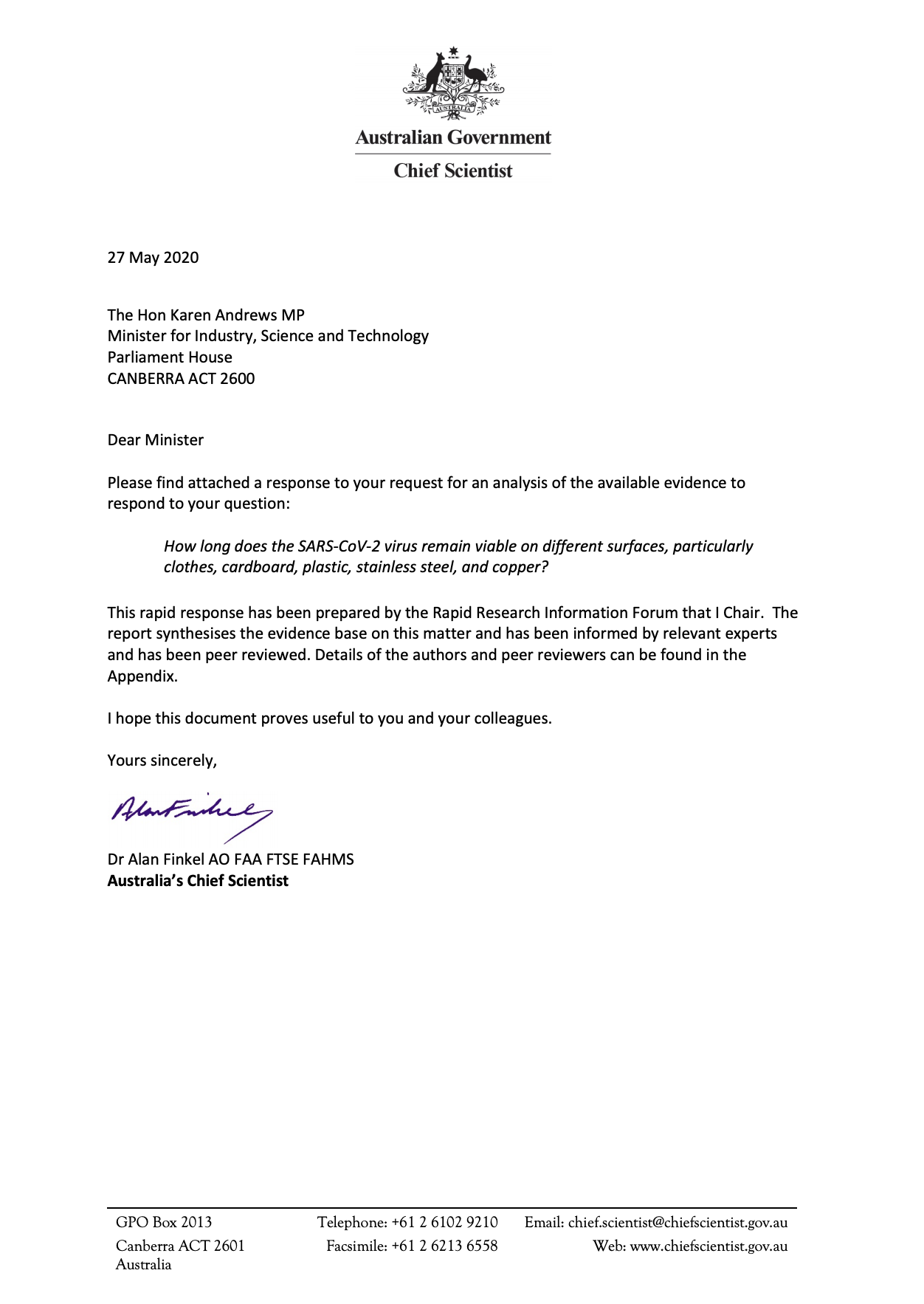This rapid research brief synthesises the evidence on how long the SARS-CoV-2 virus remains viable on different surfaces, particularly clothes, cardboard, plastic, stainless steel, and copper.
Key findings:
- Governments around the world are looking at COVID-19 containment measures. In addition to physical distancing and hand washing, understanding the amount of time the virus remains viable on different surfaces and how to efficiently clean surfaces will inform public health and infection control measures.
- While viable virus particles (i.e., functionally intact and potentially infectious) can be detected on surfaces, the extent to which people can be infected by exposure to contaminated surfaces remains to be determined.
- At room temperature, SARS-CoV-2 remains viable:
- up to four days on glass
- up to three days on stainless steel and plastic
- up to two days on clothes
- up to one day on cardboard or paper
- up to four hours on copper.
- Standard disinfection procedures should be sufficient to reduce surface contamination.
- The survival of SARS-CoV-2 on hands is not specifically known, but thorough cleansing with alcohol-based hand rubs or soap and water should be sufficient to reduce the likelihood of infection.
- Standard laundering with hot water and detergent should be sufficient to reduce contamination on clothes.
- The viability of SARS-CoV-2 on surfaces is reduced by heat and simulated sunlight




